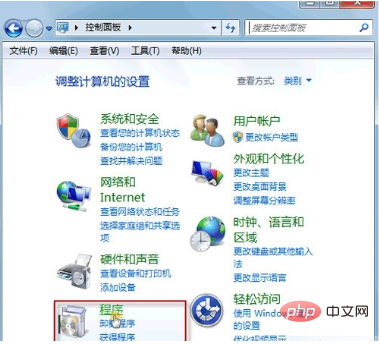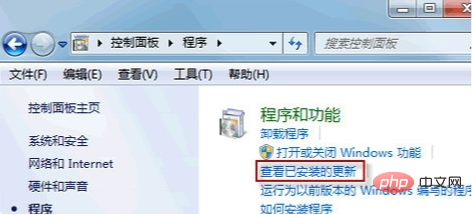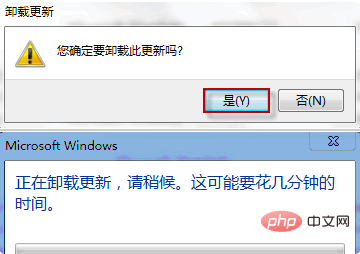
1. Tools: Computer, Windows system
can be deleted. In fact, for ordinary users, these so-called patches only increase the system size and do not need to be installed. , after installing the system, you can turn off automatic updates. The smaller the system, the better, so that its burden is not so heavy, and the startup and response speed will be relatively faster. But you must not use some so-called system doctors or weight loss software, which will only damage the system. Of course, virus defense must be in place.
2. Operation steps:
1. In the Start menu, click "Control Panel->Programs".

##Related recommendations: "
php Getting Started Tutorial"
2. Open "Programs and Features->View installed renew".

#3. Check the "Installation Time" column to find the most recently installed update. Select the update you want to uninstall, right-click the mouse and select "Uninstall". (Note: After right-clicking some updates, the "Uninstall" menu may not pop up. Because the update files are sequential, if they are associated with other updates or programs, they cannot be uninstalled directly.)

4. After the uninstall confirmation window pops up, please press "Yes" to continue.

#5. If found, you can download and install the update again. Open "Control Panel\System and Security\Windows Update" and click "Check for Updates" on the left side of the window.

The above is the detailed content of Can patch files left behind by system updates be deleted?. For more information, please follow other related articles on the PHP Chinese website!
Statement:The content of this article is voluntarily contributed by netizens, and the copyright belongs to the original author. This site does not assume corresponding legal responsibility. If you find any content suspected of plagiarism or infringement, please contact admin@php.cn





